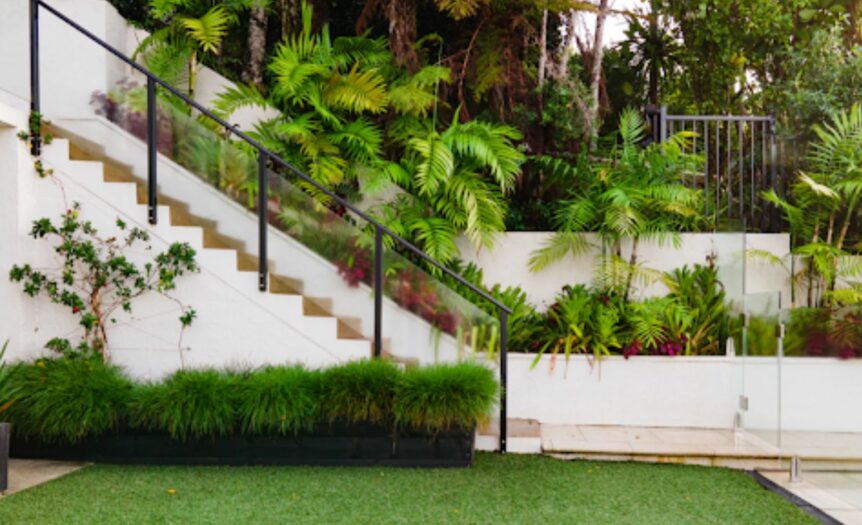Gardening is a wonderful way to relax and enjoy the beauty of nature. However, maintaining a garden can be challenging, especially for those new to the hobby. Fortunately, many tips and tricks can help give your garden a “glow up” and make it the envy of the neighborhood.
One of the most important things to consider when giving your garden a glow-up is the type of plants you choose. It’s important to select plants that are well-suited to your climate and soil type, as well as those that will thrive in the amount of sunlight your garden receives. Additionally, choosing plants with a variety of colors and textures can help create a visually stunning display.
Another key factor in giving your garden a glow-up is proper maintenance. Regular watering, pruning, and fertilizing can help keep your plants healthy and vibrant. Additionally, removing weeds and dead or diseased plants can help prevent the spreading of disease and pests. With a little effort and attention, your garden can become a beautiful oasis that you can enjoy for years to come.
- Choosing the Right Plants
- Proper Plant Placement
- Soil Improvement
- Watering Techniques
- Adding Garden Decor
Choosing the Right Plants
When giving your garden a glow-up, choosing the right plants is crucial. Here are a few tips to help you make the best choices for your garden:
Consider Your Climate
Different plants thrive in other climates. Before you start selecting plants for your garden, it’s important to consider the environment in your area. Make sure you choose plants that are well-suited to your environment. This will help ensure that they will grow and thrive in your garden.

Think About Sunlight
Different plants require different amounts of sunlight. Some plants need full sun, while others prefer shade. When selecting plants for your garden, it’s important to consider how much sunlight they will receive. Make sure you choose plants that are well-suited to the amount of sun in your garden.
Choose the Right Size
When selecting plants for your garden, it’s important to consider the size of your garden. Make sure you choose plants that are well-suited to the size of your garden. If you have a small garden, choose plants that are compact and will only take up a little space. If you have a larger garden, you can select larger plants to make a bigger impact.
Consider Maintenance
Different plants require different levels of maintenance. Some plants are low-maintenance and require very little care, while others require regular watering, pruning, and fertilizing. When selecting plants for your garden, it’s important to consider how much maintenance they will need. Make sure you choose plants you have the time and energy to care for.
Incorporate Moss Walls
Moss walls are a great way to add a unique touch to your garden. Not only do they add visual interest, but they also help purify the air and absorb sound. When selecting plants for your moss wall, it’s important to choose plants that are well-suited to low-light conditions. Some good options include ferns, mosses, and ivies.
Proper Plant Placement
When it comes to giving your garden a glow-up, proper plant placement is essential. Here are a few tips to keep in mind:
- Consider sunlight and shade: Different plants have different sunlight and shade requirements. Make sure you choose appropriate plants for the sunlight and shade in your garden. For example, if you have a shady area, select plants that thrive in shade, such as ferns or hostas.
- Think about size and growth habits: Consider how big your plants will get and how they will grow. Choose plants that will grow in their space and stay open. Also, consider how your plants will grow over time and ensure they won’t block each other’s sunlight or become tangled.
- Create focal points: Use plants to create focal points in your garden. Choose a few plants that will stand out and draw the eye, such as a brightly colored flower or a unique plant with interesting foliage.
- Consider the overall design: Think about the overall design of your garden and how your plants fit into it. Choose plants that complement each other and create a cohesive look. Also, consider the colors and textures of your plants and how they work together.
By following these tips for proper plant placement, you can give your garden a beautiful, cohesive look that will make it the envy of the neighborhood.
Soil Improvement
One of the most important aspects of a garden is the soil quality. Healthy soil can help plants grow stronger, produce more flowers or fruits, and resist pests and diseases. Here are some tips to improve your soil:
- Add organic matter: Compost, leaf mold, or well-rotted manure can add nutrients to the soil and improve its structure. Mix them into the top layer of soil or use them as mulch.
- Test the pH: Most plants prefer slightly acidic soil, with a pH between 6.0 and 7.0. You can buy a soil test kit at a garden center or send a sample to a lab for analysis. If the pH is too low or too high, you can adjust it with lime or sulfur.
- Avoid compacted soil: If the ground is too hard and compacted, it can limit air and water circulation and make it difficult for roots to grow. Use a garden fork or a tiller to loosen the soil, but be careful not to overdo it and damage the soil structure.
- Use cover crops: If you have a large garden or a fallow area, you can plant cover crops such as clover, rye, or buckwheat. These plants can help fix nitrogen, suppress weeds, and improve soil fertility. When mature, you can cut them down and use them as green manure.
- Avoid chemical fertilizers: While chemical fertilizers can provide a quick boost of nutrients, they can also harm beneficial microorganisms and create imbalances in the soil. Instead, use organic fertilizers such as fish emulsion, bone meal, or seaweed extract, or make your compost tea.
Improving your soil can take time and effort, but it can pay off in the long run with healthier and more productive plants.
Watering Techniques
One of the most important aspects of gardening is watering. Proper watering techniques can make a huge difference in the health and appearance of your plants. Here are a few tips to help you give your garden the perfect amount of water:
- Know your plants’ needs: Different plants have different watering needs. Some plants require more water than others, while some can go longer without being watered. Research the watering needs of your specific plants to ensure that you give them the right amount of water.
- Water deeply: When you water your plants, ensure you are watering deeply. You should water the soil around the plant, not just the surface. This will encourage the roots to grow deeper and make the plant more resilient to drought.
- Water in the morning: The best time to water your plants is in the morning. This allows the water to soak into the soil before the sun comes out and evaporates it. Watering in the evening can lead to excess moisture on the leaves, leading to fungal growth.
- Use a watering can or drip irrigation: When possible, use a watering can or drip irrigation system to water your plants. This allows you to control the amount of water that each plant receives and ensures that the water goes directly to the roots.
- Avoid overwatering: Overwatering can be just as harmful to your plants as underwatering. Make sure only to water your plants when they need it, and avoid watering them too frequently.
By following these watering techniques, you can help give your garden the perfect amount of water and ensure your plants stay healthy and beautiful.
Adding Garden Decor
Adding garden decor can be a great way to give your garden a glow-up. Here are a few ideas to get you started:
- Garden Statues: Adding a garden statue can add a touch of elegance to your garden. You can choose from various styles, such as classic Greek or Roman statues or more modern ones.
- Wind Chimes: Wind chimes can add a soothing sound to your garden and create a relaxing atmosphere. You can choose from various materials, such as bamboo or metal, and styles, such as traditional or modern.
- Fountains: Fountains can add a touch of elegance and tranquility to your garden. You can choose from styles, such as classic tiered fountains or modern minimalist ones.
- Outdoor Lighting: Outdoor lighting can add a magical touch to your garden, especially at night. You can choose from various types of lighting, such as string lights or lanterns, and different colors, such as warm white or cool white.
- Garden Signs: Garden signs can add a touch of personality and humor to your garden. You can choose from various materials, such as wood or metal, and messages, such as inspirational quotes or funny sayings.

Adding garden decor can be a fun and creative way to give your garden a glow-up. With some planning and creativity, you can create a beautiful and inviting outdoor space that you can enjoy for years.






